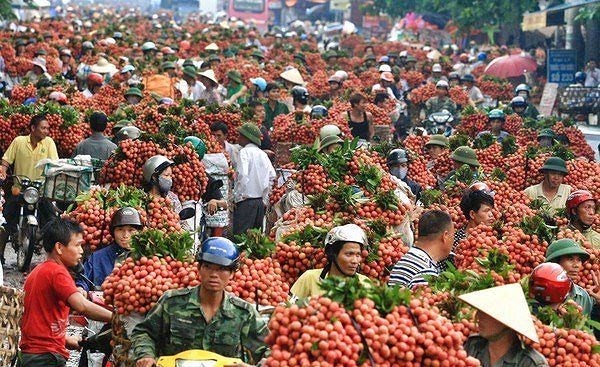
The province’s total revenue from lychee was VND 5 trillion in 2016, VND 5.3 trillion in 2017 and VND 5.8 trillion in 2018.
Farmers in the province have not had to bring their lychee to the market. Traders came to their gardens to buy the fruit.
Bui Van Canh, a lychee trader in Luc Ngan district, said the district had a bumper lychee crop with high prices this year. There is now a lack of lychee to sell to Chinese traders as it is the end of the season.
The lychee output this year in the province reached more than 90,000 tonnes with record prices of VND 30,000-50,000 (US$ 1.29-2.15), even VND 80,000 (US$ 3.44) per kilo.
A farmer could earn profits of several hundreds of millions of VND from their lychee gardens. Some households planting lychee with organic methods enjoyed much higher profits as people were paying up to VND 200,000 for a box of 10 lychees with stamps of traceability.
Tran Van Hanh, a famer in Giap Son commune, said it was easy to sell lychee this year. Their organic lychees were offered for sale for the first time with higher prices.
Cao Van Hoan, Vice Chairman of the Luc Ngan District People’s Committee, said the lychee quality this year has been the best so far. Therefore, they earned more despite lower output than last year.
This has been the first year the district applied pilot planting of organic lychee on an area of 20ha, providing clean and safe products. The application of a modern production process helped Luc Ngan lychee increase selling prices three to seven times over those of previous years.
The provincial Department of Industry and Trade said around 50,000 tonnes of lychee were sold to China so far this year.
Luc Ngan lychee was exported to 30 countries and territories, mainly to China with 90 percent of the total and some demanding markets such as the European Union (EU), the US, Russia, Canada and Japan.
























